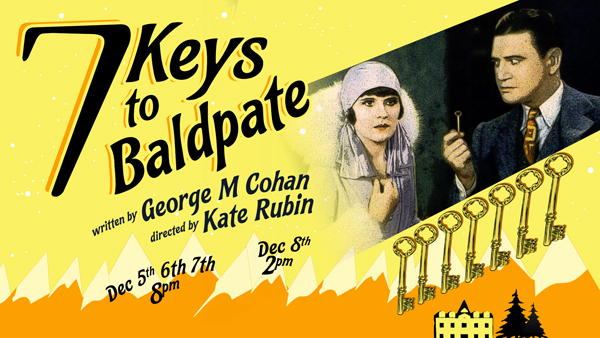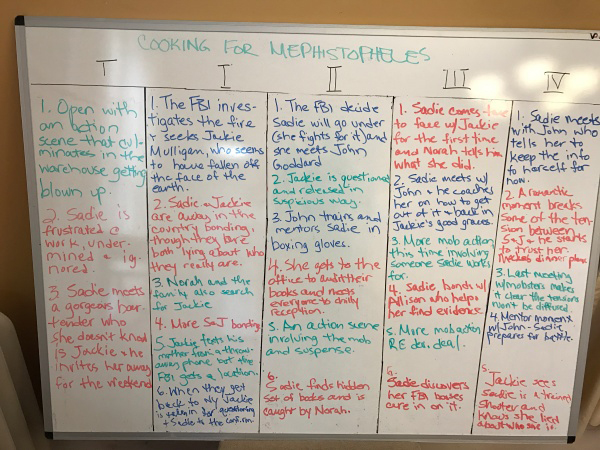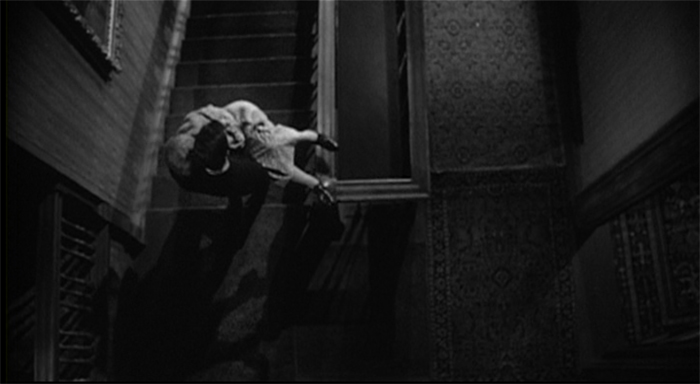Where the Crawdads Sing (2022; production still).
DB here:
When I wasn’t paying attention, along came Where the Crawdads Sing (2018 novel, 2022 film). The book was a huge bestseller, while the movie version was panned by critics but attracted a good-sized audience. It exemplifies how strategies of nonlinear storytelling have become deeply woven into mainstream entertainment.
It has an investigation plot, structured around the trial of “swamp girl” Kya, who’s accused of the murder of her boyfriend Chase in the marshlands of North Carolina. Through flashbacks we learn of her desperate childhood, as she is abandoned by her family and castigated by the townfolk. She learns to live alone in the family cabin and fills her days drawing precise images of the natural life around her. A well-meaning young man teaches her to read but he too he leaves her to struggle alone. Soon she meets Chase, a charming good-for-nothing. Is his fall from a swamp tower an accident, or did someone push him? A kindly local attorney takes her case, and the plot climaxes first in the jury’s verdict and then a twist that reveals what happened at the scene of the crime.
We’re so used to plots like this that we may forget how nonlinear they are. In the Crawdads film, the court investigation probes the circumstances of Chase’s death, but the flashbacks, instead of illustrating stages of the crime, supply Kya’s life story in chronological order. They contextualize the long-range causes of her dilemma. Accordingly, they’re narrated by her in voice-over. Titles supply the relevant timeline, dating episodes from 1963 through to 1970, the year of the trial.
All of these strategies have become familiar from a century of popular storytelling. A court case as an occasion to visit the past goes back at least to Elmer Rice’s On Trial (1914), although the play dramatizes testimony in a way that Crawdads doesn’t. (Its flashbacks, more boldly, are in reverse order.) The crosscutting of past and present has become common to explain (or obfuscate) ongoing story events. Tying us to a character’s viewpoint and letting the character’s voice narrate what we see is likewise a standard device in modern media. And of course an investigation plot is inherently nonlinear. The task is for someone to uncover the “hidden story” [2] of what occurred in the past.
Simple though it is, Where the Crawdads Sing shows just how pervasive devices associated with mystery and detective fiction have become in mainstream storytelling. Told chronologically, the story would be a biography of Kya (and would presumably have to reveal how Chase died). Instead, the film becomes what Wikipedia calls “a coming-of-age murder mystery.”
By splitting the chronological story into two parts and interweaving them, manipulating viewpoint, and rearranging temporal order, the film tries to achieve interest and suspense. We know from the start that Chase is dead, so we watch every scene with him for clues as to what could have caused it. Tension gets amplified as time passes, when the shifts between the courtroom drama and the day of Chase’s death come faster and faster. These effects couldn’t be achieved with a linear layout.
One of the major points of Perplexing Plots is to remind us just how much of popular entertainment trades on narrative strategies forged in the big genre of mystery. Once we’re reminded, we can ask: How did those strategies get implemented? How did audiences come to understand and enjoy these highly artificial ways of telling stories?
I promise not to keep plugging the book on this blog, but allow me one more notice. A Q and A with me [3] has been published on the Columbia University Press site. It tries to inform any souls whom fate has cast my way about the argument of the book. You may find it of interest.
I’m taking the occasion to note some features of the book not advertised elsewhere. Perhaps they too would appeal to you, especially if you’re interested in some of the choices a writer has to make.
Obscure is as obscure does
First, the book draws on some unorthodox sources. Most obviously, I tried to canvass obscure novels and plays that are now forgotten but that did try some experiments with nonlinear storytelling. Who’d expect a reverse-chronology play in 1921, years before Pinter’s Betrayal (1978)? A 1919 play anticipates Rear Window by offering testimony from a deaf witness and then a blind one. The first version plays out on stage in pantomime, the second in a completely dark setting. A 1936 novel offers a string of conflicting character viewpoints on a single situation, revising and correcting previous accounts, well in advance of Herman Diaz’s recent novel Trust. A 1919 play depicts a woman in different aspects, as seen by the people who know her. These instances of what we now call “complex narrative” belong to what literary scholars have called “the great unread,” the thousands of pieces of fiction and drama that haven’t become canonical through enduring popularity or academic favor.
Other precedents are dimly recalled but seldom revisited, such as George M. Cohan’s play Seven Keys to Baldpate (1913) and W. R. Burnett’s Goodbye to the Past (1934). How many people would be aware of Kaufman and Hart’s reverse-chronology play Merrily We Roll Along (1934) if Stephen Sondheim hadn’t turned it into a musical? The very existence of these marginal works helps support the premise that a lot of what we consider innovative today has broad historical roots. They just aren’t as vivid to our memory as more recent instances. But fifty years from now, will many viewers remember contemporary experiments like Go (1999) and Shimmer Lake (2017)?
The book uses other unorthodox sources. I put craft technique at the center, and so it makes sense to look at the principles that writers of fiction and drama were using. Of necessity I review the emerging idea of the “art novel” at the end of the nineteenth century, with Henry James as spokesman for this trend. In addition, unlike most mainstream literary histories, Perplexing Plots consults contemporary manuals for aspiring writers. These books are the progenitors of all those how-to-get-published books that fill Amazon today, and they reveal a surprising sophistication. Manuals allow me to show how a new self-consciousness about linearity, particularly point of view, became central to popular writing as a craft. For example, a now-forgotten critic, Clayton Hamilton, epitomizes the willingness of ambitious writers to try out new possibilities.
So one choice I made was to search out fiction, drama, and films that have fallen into obscurity. Another was to look at the nuts and bolts of plotting, as practitioners seemed to be conceiving it. These help explain why many novels and plays, major and minor, began tinkering with innovative storytelling.
Time as space
From Karen Loves TV: “Contemplations on the Whiteboard.” [6]
A nonlinear plot has a geometrical feel to it, so one way of thinking about it is to envision it as a table or spreadsheet. Where the Crawdads Sing could be laid out in a double-column table, with each present-time scene aligned with the past sequence that follows it.
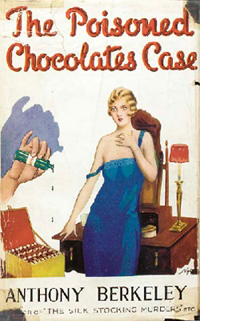 [7]There are more complex possibilities as well. Griffith’s Intolerance (1916) would constitute a four-column layout displaying each different historical epoch. Perhaps this is one sense of the term that came into use in the 1940s: “spatial form” as a description of unorthodox narratives. The principle is akin to the whiteboard “season arcs” and “episode outlines” [8]used in writers’ rooms to lay out story lines threading through a film or TV series.
[7]There are more complex possibilities as well. Griffith’s Intolerance (1916) would constitute a four-column layout displaying each different historical epoch. Perhaps this is one sense of the term that came into use in the 1940s: “spatial form” as a description of unorthodox narratives. The principle is akin to the whiteboard “season arcs” and “episode outlines” [8]used in writers’ rooms to lay out story lines threading through a film or TV series.
Novelists have long made use of such charts. The most famous is that prepared by James Joyce for Ulysses, where each chapter is assigned a different color, body organ, and so on. This was published in Stuart Gilbert’s 1930 book [9]. Because the rights to reproduction are obscure, we regrettably didn’t include it my book. No surprise, though, it’s available online [10].
I did, however, obtain rights to a less-known but rather brilliant table included in Anthony Berkeley’s Poisoned Chocolates Case [11] (1929). Later chapters of Perplexing Plots use tables of my own devising to clarify the complicated layout of Richard Stark’s Parker novels, the chapter structures of Tarantino films, and the alternating viewpoints and time schemes of Gone Girl. There will always be readers who complain that these tables are just academic filigree, but I believe that they help us appreciate the intricate interplay of time, segmentation, and viewpoint. They show how precise the narrative architecture of mystery fiction can be.
To spoil or not to spoil
For decades, criticism of mystery fiction has labored under the expectation that a critic must not reveal a story’s ending, or the story’s central deception. In journalistic reviews of literature and film, the writer is expected to keep such things secret, but even academic studies of crime fiction put pressure on the critic to maintain the surprise of whodunit and howdunit.
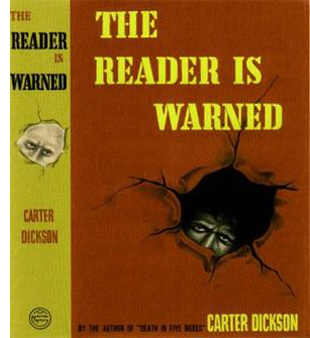 [12]But this limits our ability to study plot mechanics. I chose to preserve the secrets of the books, plays, and films as much as I could (as with my Crawdads sketch). Still, when the analysis demanded exposure of the “hidden story,” I did so. This doesn’t result in a lot of spoilers because some canonical texts, like The Maltese Falcon, Laura, and The Big Sleep, are very well-known. But I lay out some strategies of deception in novels by Christie and Sayers and films such as Gone Girl and The Sixth Sense. There really was no other way to show points of narrative craft at work in them, particularly the fine grain of writing or filming that shapes our response. I regret most exposing the central feint of Ira Levin’s novel A Kiss Before Dying, so readers who aren’t familiar with the book may want to read it before reading my account. Otherwise, I can only cite the title of one of Carter Dickson’s trickiest novels [13].
[12]But this limits our ability to study plot mechanics. I chose to preserve the secrets of the books, plays, and films as much as I could (as with my Crawdads sketch). Still, when the analysis demanded exposure of the “hidden story,” I did so. This doesn’t result in a lot of spoilers because some canonical texts, like The Maltese Falcon, Laura, and The Big Sleep, are very well-known. But I lay out some strategies of deception in novels by Christie and Sayers and films such as Gone Girl and The Sixth Sense. There really was no other way to show points of narrative craft at work in them, particularly the fine grain of writing or filming that shapes our response. I regret most exposing the central feint of Ira Levin’s novel A Kiss Before Dying, so readers who aren’t familiar with the book may want to read it before reading my account. Otherwise, I can only cite the title of one of Carter Dickson’s trickiest novels [13].
Part of the justification for hiding the legerdemain is the doctrine of “fair play.” I trace how this idea emerged in the Golden Age of detective fiction, when a story was treated as a game of wits between author and reader. In principle, nothing necessary to the solution of the puzzle should be withheld, though it can be disguised or hinted at. One thing I learned in writing the book is that fair play has become a premise of most duplicitous narratives in any genre, from horror to science fiction. People don’t realize how much the maneuvers of Psycho and Arrival owe to the belief that the audience should in principle be able to go back and see how we were misled. (We can do this with the “missing clue” in Crawdads as well.)
Fair play encourages the author to be ingenious and entices the audience to appreciate artifice-driven construction. Both effects are legacies of classic detective fiction, and they still shape much mainstream entertainment.
Thanks to Maritza Herrera-Diaz of Columbia University Press for arranging for the Q & A published on the Press site.
The phrase “the great unread” is used by Margaret Cohen in The Sentimental Education of the Novel [14](Princeton, 1999) and cited in Franco Moretti, “The Slaughterhouse of Literature,” MLQ: Modern Language Quarterly 61, 1 (March 2000), 208.
As I’ve indicated in an earlier entry [15], Martin Edwards’ The Life of Crime [16] is a vast and entertaining survey of the history of mystery fiction. It was crucial help to me in writing Perplexing Plots. Martin, an advance reader of the manuscript, has been kind enough to discuss my book on his blog. [17]
Other early responses to the book have been encouraging. Michael Casey reviewed it for The Boulder Weekly [18], and Doug Holm discussed it on KBOO on his show Film at 11 [19]. My thanks to both these commenters.
Psycho (1960): Misdirection and fair play all in one shot.

